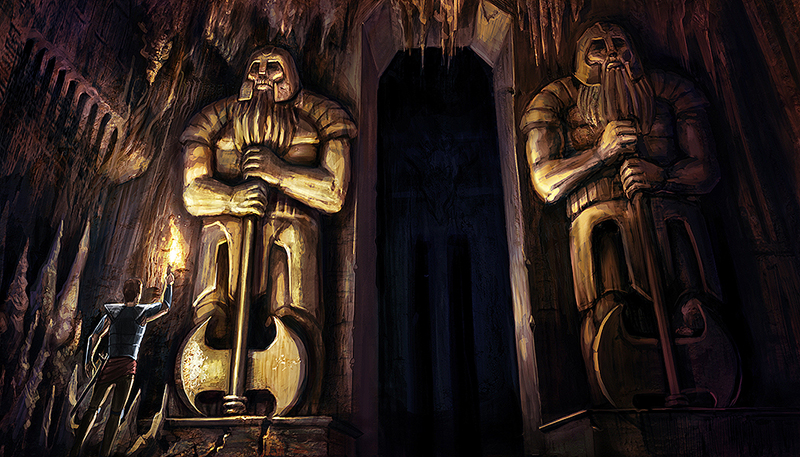A few hours ago, the public playtest of Pathfinder Second Edition was announced. My guess was always the Gen Con 4 years after the launch of Pathfinder Unchained, which looks to be spot on (2 years to gather feedback from that book, 2 years to incorporate). My second clue that I was on the right track was when the point person on several of the RPG books was given to James Jacobs, a gentlemen more closely associated with the setting development instead of system development. This told me the RPG team had other priorities. The most likely guess to me was Pathfinder Second Edition.
With the core engine of the game nearly 20 years old, it is time for an overhaul, in the way that Wizards did with 4th and 5th editions in that time span. So what kind of changes should we expect to see in the new edition and what should stay the same. These are my predictions as to what we will see in the Pathfinder Playtest. Mind you: I have absolutely no more insider information than you; this is just the mad ramblings of someone else on the internet, except that I do have the perspective of being a publisher and I know how that affects certain decisions. So without further ado, here are my thoughts.
1. The Game Will Feel Familiar
A decent amount of the game will be something that you know already. Dwarven fighters wielding axes will join forced with half-orc barbarians and elven wizards to save the day. You will still have levels for characters and spells and of course they will not be the same thing. Your hat of disguise will still be your halfling rogue’s favorite accessory, and gnomes will still only be taken by gnome fans. You will all break down doors, kill monsters, and take their stuff all while rolling a d20 as the core die for the game. I do not see any need to fear here.
2. Some Classes Will Get an Overhaul
The cleric is a great class, really. However, its design is really showing its age. Both the oracle and warpriests are exceptional healers and have many more class options that the cleric lacks. Then there are secondary healers like the bard, druid, shaman, and witch which can heal as well but do so with considerably more versatility than just healing. For the cleric to be anything but an undead killer and healing wand, it needs much more in the way of class options.
Then there’s the rogue. The alchemist has trapfinding, and the ninja has sneak attack. Both of these have considerably more versatility than the rogue, and there are other classes do something similar to the rogue. It lacks abilities that it can call its own. Expect the rogue to be more distinct.
Other classes like the fighter and maybe even the wizard are could be considerably enhanced.
3. Borrowing Ideas from Starfinder/D&D 5e
I do not believe it a stretch to say that Pathfinder took the idea of alternate class options and ran with it more than any other before. They did such a good job with it, that design idea is evident in D&D 5e with their subclasses, hard-coding it into each class instead of bolting it on at a later date. Starfinder refined it even further by having the sub-classes/archetypes at the same levels, allowing a fighter or a wizard to take the same subclass. This idea, I expect to see in Pathfinder as well, if not exactly as in Starfinder, then the next evolution in the idea—whatever that may be.
In both Starfinder and 5e there are far less types of bonus to be applied to skills and consolidated skill lists; it seems only natural to see that in PF2e as well.
The last idea taken straight from Starfinder (originally from Pathfinder Unchained) is the monster creation system. As someone that built many monsters, I can say that the Unchained/Starfinder rules are the way to go.
4. Pathfinder Setting is Inseparable from the System
This is where my concern starts to show. As a compatible publisher, books that mix setting and system make it more difficult to separate one from the other. While I not have any doubt that I can accomplish this without any real issue, I do see this as a reoccurring issue for new publishers. Even still, it will be harder for me. I may be allowed to refer to a new spell called ray of light, but if it is listed in the spell section under D because the spell refers to a certain goddess that flowers at dawn, then it will only make my books that much harder to use. While I doubt this will be much of a problem for the core book, I do this as an issue for future expansion books down the road.
Like I said above, these are only guesses. It will be interesting to see come August how close those guesses are.
Visit JonBrazer.com for monsters, races, and other ideas you can use during the playtest (if we are allowed).

One thing that occurred to me with #4 is what if, for example, they put in lines under the generic name’s space referring to the official name. So in spells, in the appropriate space alphabetically have:
Ray of light: See “So and So’s Ray of Light”
Unfortunately, I see that as unlikely since space can be at a premium, but it would be extremely useful for exactly this sort of situation. On the one hand, the spells with proper names adds some fun flavor, but having two different names for the same spell out there can lead to confusion, especially if it’s not ones that have been around forever and are well known like D&D’s Big Boy’s hands. 😉